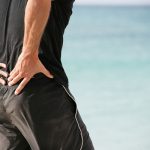Cleveland Clinic physicians bring precision to treating tendon afflictions
Drs. Dominic King and Jason Genin, two sports medicine DOs at Cleveland Clinic, are changing how tendon injuries are diagnosed and treated, making the process more efficient and effective.
Their work began with studying the efficacy of orthobiologic injections, treatments including platelet-rich plasma injections, stem cell injections, and placental-derived extracellular matrix injections. They discovered it was difficult to determine whether the treatments were effective because the diagnoses were so generic.
Until recently, most tendon injuries were diagnosed as tendinitis, which is inflammation of a tendon. This was due in large part to a limitation in diagnostic imaging, with the past options being X-ray, which only reveals skeletal injuries, and magnetic resonance imaging (MRI), which is static. However, the current standard is musculoskeletal ultrasound, which allows instantaneous imaging of the tissues in motion.
“Ultrasound is basically the orthopedic stethoscope. It’s a fast and cheap tool we can keep right in the office and it’s highly effective,” says Dr. King. “We rely on it extensively to get a clear view of what’s happening within the layers of tendons as they engage.”
Dr. King says ultrasound allows physicians to distinguish between inflammation (tendinitis) and degeneration (tendinosis) and a longitudinal tear. The team created a classification system for each type of injury to better track efficacy of treatments. It places injuries into one of four categories:
- Grade 1: Inflammatory tendinopathy
- Grade 2: Degenerative tendinopathy
- Grade 3: Inflammatory on degenerative tendinopathy
- Grade 4: Longitudinal tearing
Prior protocol mandated physicians begin with the least invasive procedure, like a corticosteroid injection, and gradually escalate all the way up to surgery if necessary.
Dr. Genin says that treatments have now evolved to address the specific pathology. When treating tendinitis, the best approach is rest and ibuprofen. If it’s not better after 6 weeks, physical therapy is likely the next step. However, with tendinosis, treatment should start with physical therapy and progress to orthobiologic injections.
Dr. King says physicians and health care systems around the country have reached out to better understand and adopt their classification system and overall improved approach to care. Meanwhile, he and Dr. Genin continue to study the most effective application of treatments in an effort to hone treatment protocols.
“We obviously want to offer our patients the best possible outcome, which is a fast and full recovery,” says Dr. Genin. “The steps we’re taking now will get us there in the near future.”

